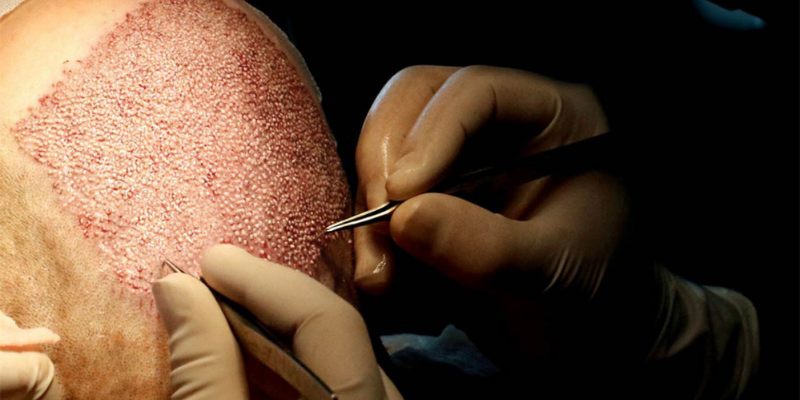How Long After Hair Transplant Can I See Results?
How long after hair transplant can I see results? Most of the time, hair loss is temporary, and the hair grows back on its own without any medicine. In some cases, hair loss can be permanent, so you should think about how to care for your hair. There are many things you can do to try to stop hair loss or slow it down. If you want to treat hair loss, you should be very careful during the hair transplant results. This is because hair goes through different stages of development and grows up over time.
Because no two situations are the same, there is no one right time to get a hair transplant. For instance, contrary to what most people think, age is not a factor in deciding whether or not to get a hair transplant. But there aren’t enough diseases, and they need to be given to a lot of people.
Even though there is no set age for hair transplantation, many doctors prefer to work with people in their late 30s because it gives them a chance to check for hair loss more thoroughly. Even though people under 25 can have surgery, they are not good candidates for this procedure because hair loss doesn’t stop until this age. It would make it less likely that specialists could predict hair loss.
How Long After FUE Hair Transplant Can I See Results?
When will the hair transplant start to work? But the biggest problem that can happen with early treatment is that the patient may start to pull out hair follicles from other places that are also balding because of the treatment. In these cases, our doctor may give certain people drugs like minoxidil or finasteride to stop hair loss before they go through more treatment. In either case, people who go to a specialized clinic go through a series of tests to find out what causes hair loss. This is because the type of alopecia each person has determines the best way to treat them.
After a series of evaluations, it was decided that surgery was the best way to treat the patient’s hair loss. Now that the patient has had surgery, he or she has almost no concerns. Keeping in mind that every situation is different, this makes a lot of sense. The genetic information on the grafted follicles makes a big difference. Some people’s follicles grow very quickly, while others’ grow very slowly. Because follicles have the same DNA and can’t get alopecia, they will act the same in the place where they are transplanted.
What Should You Do To Get The Best Hair Transplant Results?
When it comes to how long you have to wait to see the real data, the answer depends on the fact that the results don’t show up overnight. We won’t be able to see this new solid hair from the grafting until the third month, which is called the anagen phase in medicine. If we keep watching new hair grow, we will start to understand how the scalp works and what the end result is.
The new solid hairs that grew from the grafts during what doctors call the anagen phase don’t start to grow until the third month. We won’t be able to figure out why some things happen on the scalp and what effects they have until we watch new hair grow. It’s important to remember that our new hair doesn’t start growing regularly until the fourth month. Ten months after the surgery, we should be able to see the full results. Six to nine months after surgery, the rate of growth speeds up. We might know how the transplant turned out after a year. Once all of the transplanted hair has grown in the right way.
Is Hair Transplant Permanent?
It’s important to remember that the grafted follicles are hair that can last a lifetime, no matter if the hair grafting is permanent or if it needs to be done again and again. It means they are the same as any other hair. So, they will fall out and grow back as part of the hair’s natural cycle. That doesn’t mean, though, that the hair doesn’t change as the person does. There may also be a lack of certain follicles. Even though this has nothing to do with alopecia or the lack of hair that caused the patient to need graft care.
Last but not least, the answer to the question of which parts of the body are good for hair transplants. The FUE or DHI method can be used to transplant hair in places other than the scalp, such as the beard, eyebrows, and body. As cosmetics keep getting better, it’s becoming more and more popular in hair grafting centers.
Hair Transplant Aftercare
It’s important to know that you won’t see the full results of your hair transplant for a long time. So, it is important to be patient. The effects are very different from one patient to the next in terms of how bad they are. A few weeks after your procedure, you might notice that your “new” hair is starting to fall out. This is scary because it could make you think that your hair transplant didn’t work. But don’t worry, it’s normal and usually only lasts a short time! After three to six months, you’ll start to see new hair growing in its place. Your hair takes a long time to grow up. But it usually takes between 12 and 18 months to see the final results of surgery.
A hair transplant can be done by our doctor in a number of different ways. So, the length of time it takes to heal may depend on which of these treatments our doctor chooses. But it’s very important that you follow our doctor’s instructions to the letter while you’re getting better. You’ll not only be able to heal in comfort, but you’ll also be able to get better results.
How Important is Hair Transplantation After Care for Long-Term Results?
The hair transplantation is a standard and increasingly popular procedure that many men and women opt for to restore their natural hair. The procedure involves transferring healthy hair follicles from the back or sides of the scalp to balding areas. Although it is a relatively safe and straightforward procedure, take proper care of your hair after the surgery to ensure optimal results. The success of a hair transplant depends mainly on how well you take care of your scalp and newly transplanted hair follicles during the healing process. With proper hair transplantation after care, your hair may become smooth, firm, and even fall out. Here are some tips to help you maximize your hair transplant results and maintain your new look.

One of the most important steps in ensuring long-term success with a hair transplant is following your hair transplant surgeon ’s instructions for hair transplantation after care. Your doctor will likely provide you with detailed instructions for taking care of your scalp, including when and how often to wash it, as well as what products you should use. In addition, they may provide you with medications to reduce inflammation and help facilitate healing.





